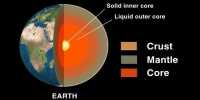The Sterkfontein caves in South Africa are sometimes referred to as the “Cradle of Humankind” and are a UNESCO World Heritage site. Since this area contains the world’s greatest deposits of early hominid Australopithecus fossils, researchers have been studying there for many years. The fossils may be older than previously realized, according to experts. In fact, it is a million years older than previously thought. Prior to this, the age of Member 4, an old cave infill where the majority of the Australopithecus fossils from Sterkfontein have been discovered, has been disputed, with ages ranging from 2-3 million years ago.
In a recent study published in PNAS, researchers used a novel dating technique to establish that Australopithecus indeed existed in the Sterkfontein cave about a million years before the emergence of the species Homo and Paranthropus. This suggests that these fossils predate Lucy, the most well-known Australopithecus in the world. The revised dates for Member 4 range from 3.4 to 3.6 million years, showing that the Sterkfontein hominins lived alongside early Australopithecus species like Australopithecus afarensis in east Africa, according to a statement from Professor Dominic Stratford, the caverns’ research director.
Lead author and Purdue University geologist Professor Darryl Granger helped date Little Foot, an extremely rare virtually complete Australopithecus, at 3.7 million years old by using a method for dating buried cave sediments. He and a group of researchers examined the remaining Australopithecus-bearing cave sediments, and they now have a new age estimate of 3.4 to 3.7 million years instead of the earlier 2-2.5 million years. These new findings suggest that the fossils in question actually date to the early Australopithecus period.
According to Stratford, “this significant new dating study pushes the age of some of the most fascinating fossils in human evolution studies, including one of South Africa’s most famous fossils, Mrs Ples, back a million years to a period when we find other iconic early hominins like Lucy in east Africa.” So how did earlier scientists miscalculate the date so badly?
The cave system itself is substantial and intricate. As bones and pebbles tumbled to the bottom of a large hole in the earth, it can be exceedingly difficult to determine the exact ages of the fossils discovered in this location. As a result, scientists typically utilize the surrounding animal fossils and calcite flowstone deposits to date newly discovered fossils. Unfortunately, as bones move in caves, fresh flowstone can get deposited in older silt. This appears to have occurred in this instance, which is why the dating was so drastically underestimated.
According to Granger, there are more Australopithecus fossils in Sterkfontein than anyplace else in the globe. But getting a decent date with them is difficult. People have compared the ages of cave features like flowstones and the animal fossils discovered nearby to arrive at a variety of dates. These disagreements are settled by our data. It demonstrates that these fossils are substantially older than previously believed.
















